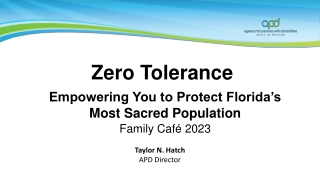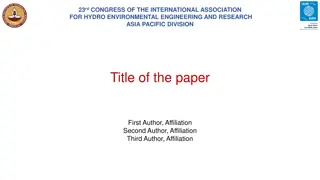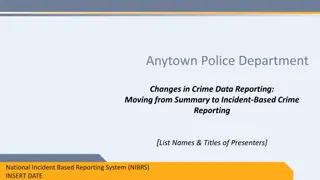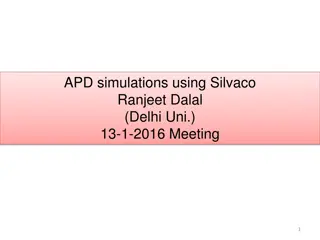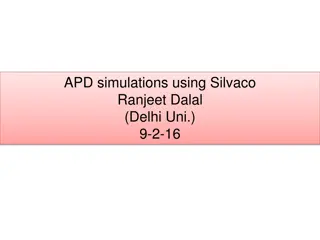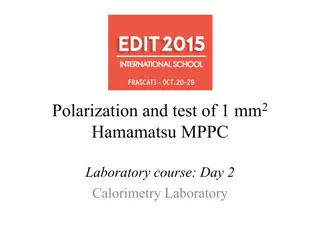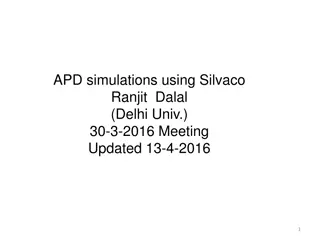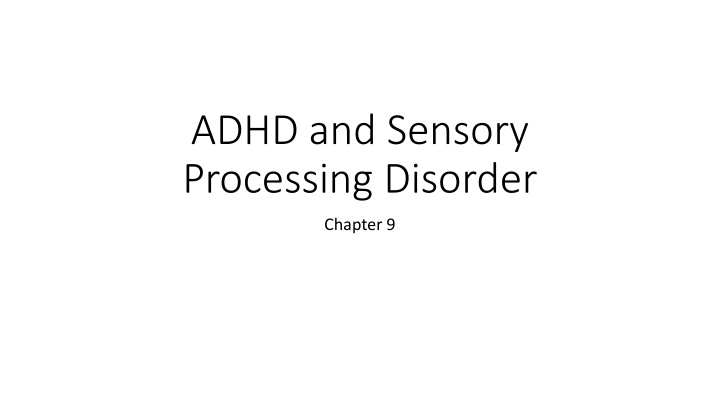
ADHD and Sensory Processing Disorder
Explore the intersection of ADHD and Sensory Processing Disorder, covering topics such as foundational principles, assessment methods, and treatment approaches. Dive into the primary issues of inattention, hyperactivity, and impulsivity, along with practical observation techniques for evaluating speech and language difficulties in children with these conditions.
Download Presentation

Please find below an Image/Link to download the presentation.
The content on the website is provided AS IS for your information and personal use only. It may not be sold, licensed, or shared on other websites without obtaining consent from the author. If you encounter any issues during the download, it is possible that the publisher has removed the file from their server.
You are allowed to download the files provided on this website for personal or commercial use, subject to the condition that they are used lawfully. All files are the property of their respective owners.
The content on the website is provided AS IS for your information and personal use only. It may not be sold, licensed, or shared on other websites without obtaining consent from the author.
E N D
Presentation Transcript
ADHD and Sensory Processing Disorder Chapter 9
You dont have to read about auditory processing disorders Bottom of page 202-209
Outline Foundations of ADHD Speech and Language Difficulties (ADHD) III. Assessment ADHD IV. Treatment--ADHD I. II.
I. Foundational Principles and Nature of SPD II. 8 Sensory Systems III. Sensory Diet
A. 3 Primary Issues** Inattention difficulty selecting what to attend to, focusing long enough; difficulty concentrating; difficulty planning, organizing, and executing activities Hyperactivity excessive physical movement; can t sit still; bounces from one activity to another Impulsivity difficulty regulating behavior; acting without thinking, problems waiting their turn
III. ASSESSMENT-ADHD** Usually it s observations and having parents and teachers fill out questionnaires In the schools, the psychologist does this We can evaluate speech and language, especially pragmatics Testing them 1:1 in a quiet room generally tells us nothing about pragmatics we need to observe the child in everyday settings with other children
I will sometimes** Do playground duty or bus duty and observe interactions with peers You can observe in the classroom, at recess, and in the cafeteria
Help them organize their thoughts to avoid verbal mazes** Adult: What did you do for Halloween? Child: It was fun there were costumes, my mom took us to a haunted house, I was Spiderman, we ate candy, oh, before we left home my dad made us promise to be safe
Specific Strategies for Children with Developmental Language Disorder, Sensory Processing Disorder, and Fine Motor Delays
I. Foundational Principles and Nature of SPD** It is increasingly being found that children with special needs such as Developmental Language Disorder (DLD), ADHD, and Autism Spectrum Disorder (ASD) have accompanying sensory and fine motor deficits
STAR Institute, 2023:** Pioneering occupational therapist, psychologist, and neuroscientist A. Jean Ayres, Ph.D., likened SPD to a neurological traffic jam that prevents certain parts of the brain from receiving the information needed to interpret sensory information correctly.
Vestibular system:** Provides our brain with information about motion, head position, spatial orientation Involved with motor functions that allow us to keep our balance, stabilize our head and body during movement, and maintain posture.
Modulation** Allows us to focus on what s most important Teaching Self-Modulation Recognizing sensory needs Teachable moments Recognizing how different types of activities can be calming, alerting, or just right
Due to under-responsivity, is in constant motion Thrill seeker Needers behaviors are attempts to reach high threshold level for sensory registration Need alerting/stimulating activities
Term coined by Patricia Wilbarger The optimum sensorimotor input a person needs to feel alert, exert effortless control, and perform at peak. The strategic use of sensory activities
Childdevelopment.com 2024:** Lists sensory activities as part of a sensory diet that helps to keep a child feeling calm and sensorily organized. These activities help children to attend, learn and behave to the best of their ability.
Reflection** You are a public school SLP who has many students on your caseload with ADHD and SPD. List 3 different materials/activities you will use with these students that we did not already discuss.





